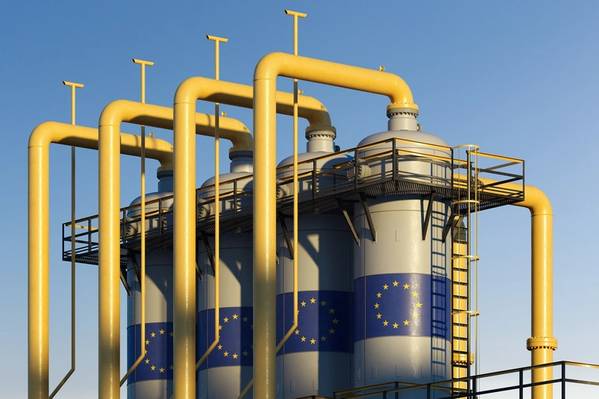
Europe's record gas surplus inherited from the winter of 2023/24 has been largely eliminated following an unusually small accumulation of inventories so far in the summer of 2024.
Inventories across the European Union and the United Kingdom have risen by just 336 terawatt-hours (TWh) since March 31, according to data from Gas Infrastructure Europe (GIE).
The accumulation has been the smallest since 2012 and compares with a prior 10-year average increase of 443 TWh ("Aggregated gas storage inventory", GIE, Aug. 14).
Stocks were still 170 TWh (+20% or +1.46 standard deviations) above the 10-year average on Aug. 12 but the surplus had narrowed from 277 TWh +70% or +2.03 standard deviations) at the end of winter on March 31.
The record carryout from last winter ensured stocks would need to accumulate more slowly than usual to prevent storage space running out before the winter of 2024/25, but the adjustment is now largely complete.
EU and UK inventories totalled 1,006 TWh on Aug. 12, slightly below 1,024 TWh on the corresponding date last year; storage facilities were just under 88% full compared with more than 89% full in 2023.
Europe's storage season is approaching the two-thirds way point, with stocks increasing for 134 days so far since March 31, compared with an average duration for the refill season of 209 days over the last 10 years.
Storage typically peaks around Oct. 27, but there has been considerable variation, depending on autumn temperatures and gas prices.
Since 2011, pre-winter inventories have peaked as early at Oct. 9 (in 2016) or as late as Nov. 13 (in 2022) according to GIE data.
Based on patterns over the last decade, however, storage is projected to reach 1,173 TWh before winter depletion begins in late October or early November.
The projected peak has come down from 1,280 TWh at the start of the injection season and is only slightly above the technical capacity of the system at around 1,149 TWh.
As a result, the threat of storage space running out before summer ends has been almost eliminated, which has lifted both spot gas prices and calendar spreads from relatively depressed levels earlier this year.
Inflation-adjusted front-month Dutch TTF futures prices have averaged 38 euros per megawatt-hour (MWh) so far in August (86th percentile for all months since 2010), up from 26 euros (42nd percentile) in February.
Futures contracts for October and November 2024, covering the peak storage period, have traded in an average contango of 2 euros so far in August, which is the smallest discount since the start of 2023.
The narrowing contango/discount signals less need to defer LNG imports until after the winter drawdown begins and less need to encourage generators to burn extra fuel in the meantime to ensure space does not run out.
The rebound in front-month prices has likely been anticipated, accelerated and amplified by traders and investors, leading some analysts to question whether it has already overshot.
But prices are unlikely to retreat to the lows of February and March unless the forthcoming winter proves very much milder than normal for the third time in a row.
(Reuters- John Kemp is a Reuters market analyst. The views expressed are his own. Editing by David Evans)